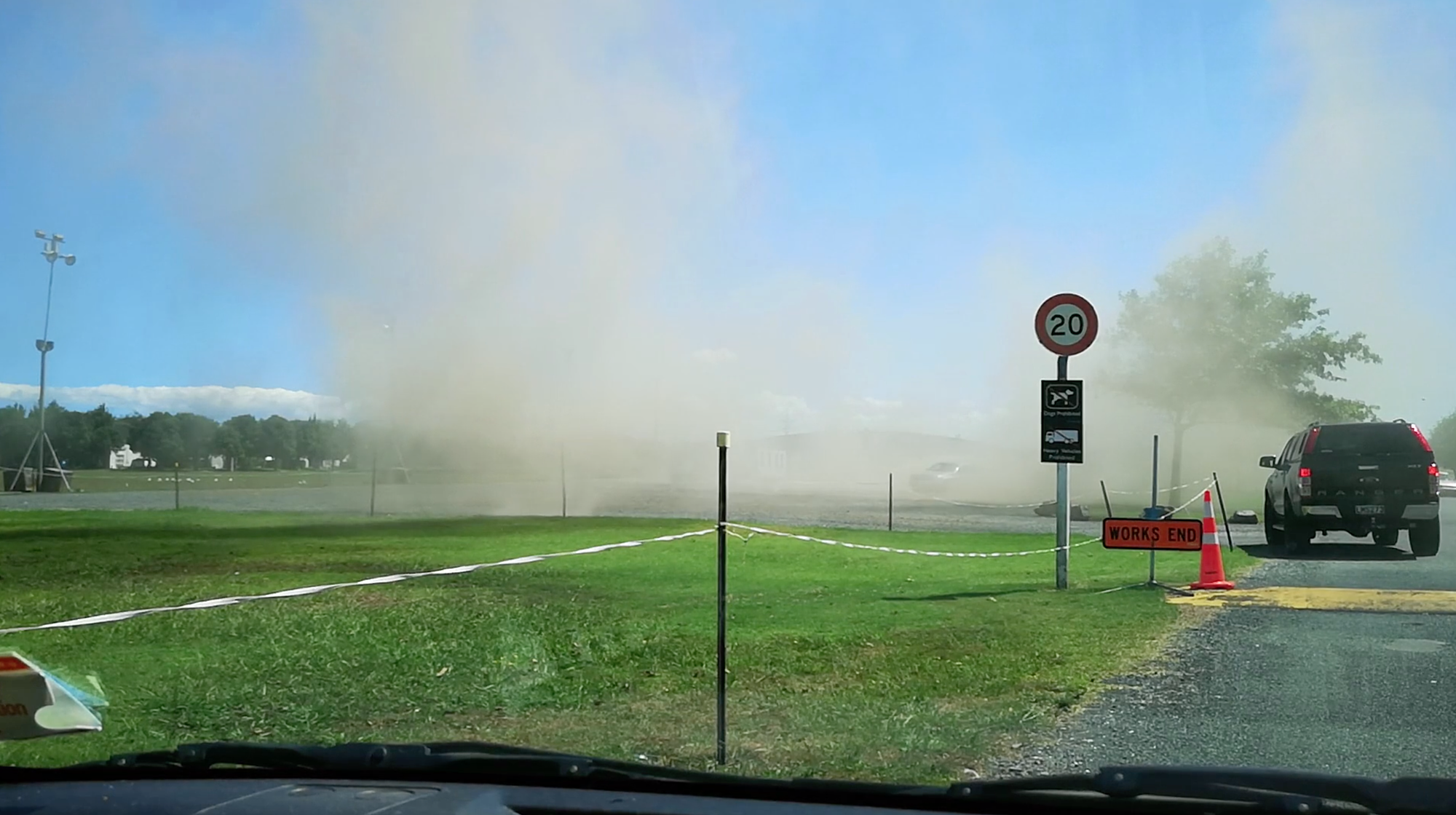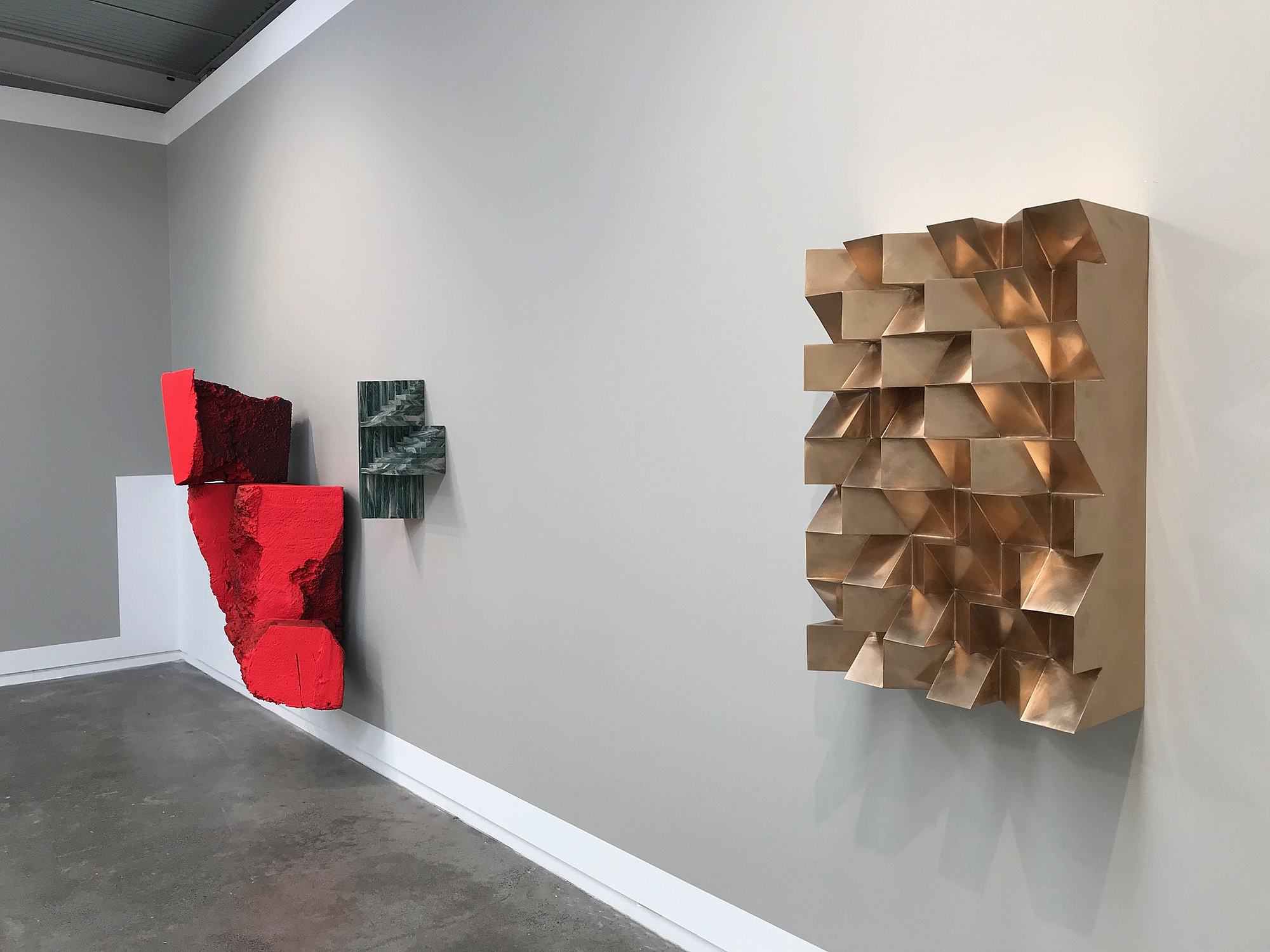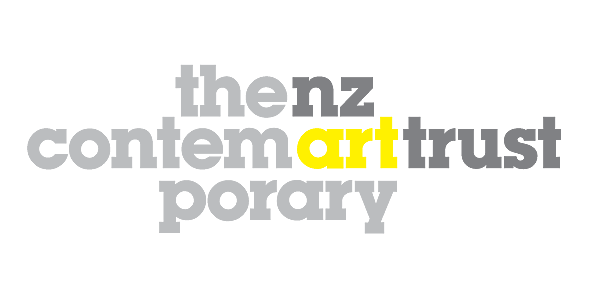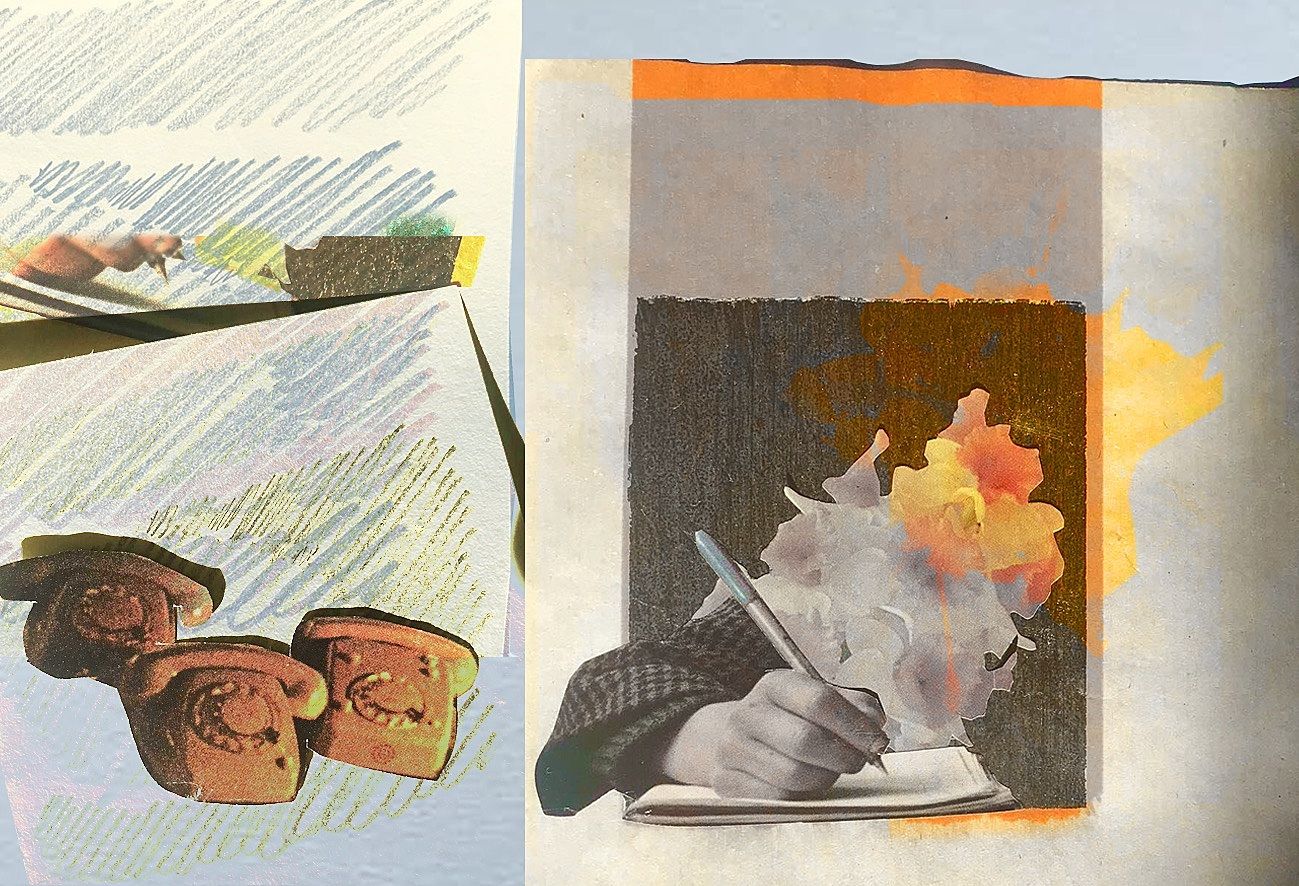The Unmissables: April
A monthly round-up of artworks in Tāmaki Makaurau that we keep returning to.
A monthly round-up of artworks in Tāmaki Makaurau that we keep returning to.
It’s getting cold and dark here in Tāmaki Makaurau, which is making it harder to leave to our homes on the search for great art. However, never fear! If you don’t want to waste your time with work that doesn’t light your fire, then we have done all the heavy lifting for you. This month our review team of art critics Lucinda Bennett, Lana Lopesi and Francis McWhannell has searched the city to find the art in Tāmaki Makaurau that will warm your heart.
A new name in our neck of the woods, Melbourne-based Marlee McMahon (1996) graduated from Victorian College of the Arts in 2017 and has been exhibiting regularly across Melbourne and Sydney ever since. For her Aotearoa debut, McMahon shows two works, both hard-edged geometric abstract paintings that feel at once straight out of the 1980s and yet also from the future. They seem to combine a kind of quaint domesticity – both paintings are framed by rich brown patterning that recalls the intricate crown mouldings and millwork of decades past – with the cold precision and paradoxical ambiguity of technology. In the eerily titled this is a great aircraft (2018), the chocolatey frame only confines three sides: the top of the painting is left open, its pale centre exposed to the elements, leaching vaguely onto the wall above.
McMahon’s paintings make me think of media that tried to visualise the future but could only imagine a slicker, more mechanised version of itself, films like TRON and Blade Runner – both of which have recently been rebooted, their new directors having to contend with the aesthetic baggage of the originals. I sense a similar nostalgia at play in these paintings, a coalescing of aesthetics that have never quite existed together before, not in the real world, not at the same time. – LB
Georgie Hill, Marlee McMahon, Kim Pieters and Carl Sydow
A more comprehensive physical explanation
Bowerbank Ninow
10 – 30 April
Auckland-based artist and educator Layne Waerea (Ngāti Wāhiao, Ngāti Kahungunu) is known for her interventions into public spaces. Waerea completed her doctorate at AUT University in 2016 and before that practised and lectured in law. For Waerea the question of how the Treaty of Waitangi (1840) continues to affect the foundations of law in Aotearoa New Zealand today provides fertile ground for her critiques and provocations on the privatisation of natural resources and complicit behaviour in public spaces.
In the video work Free Dust (2019) – from an installation of the same name to be exhibited at Auckland Art Fair as part of Whanaungatanga – Waerea continues to look at different natural resources and possibilities for harvesting them. We watch a car doing burnouts filmed from within another: as other cars drive into the shot trying to go about their day and stop to watch or wait for the dust to subside, the burnouts start to feel illegal. Who does govern our behaviour at the park? The car – and its burnouts – challenges normative relationships to public spaces and subsequently encourages you, the viewer, to reflect on your own compliance in these spaces. The response to the burnouts is an instruction – in how to harvest dust, since it’s free to take. – LL
Ammon Ngakuru, James Wylie with Hannah Valentine, Faisal Abdu’Allah, Ruth Ige, PĀNiA! in association with Francis McWhannell and Mokopōpaki, Nikau Hindin, Layne Waerea, Caitlin Patane, Rachel Ashby with Sarah Callesen and others, Rainer Weston with Hikalu Clarke
Whanaungatanga
Auckland Art Fair
1 – 5 May
cuttingsOmEEdgEs is the first solo show in Aotearoa by Dusseldorf-based Jan Albers (Germany, 1971). A good number of the works centre on the same form: a cuboid with one edge sliced off that puts me in mind of a compact mono-pitched dwelling. The exhibition is otherwise remarkably diverse, encompassing materials as divergent as burnished aluminium and pigmented polystyrene, and depending equally on traditions of sculpture and painting.
There’s a certain evasiveness to Albers’ presentation. Occasionally, a work will be frank. scArpAsteps (2019), for instance, is explicit about what it’s made of (marble) and what it’s referring to (the architecture of Carlo Scarpa). More often, though, his pieces are coy, withholding as much as they proffer. mightyhighOnlight (2018) is cast bronze, but it reads just as readily as gilded wood, reminding me of broader mismatches between surface and substance.
At the heart of the exhibition is the interplay of construction and destruction, or – to borrow a phrase from Aristotle – ‘generation and corruption’. For every work ostensibly built up unit by unit there is another cut or eaten away. The binary is an old one (after all, it broadly characterises the two ways of making a sculpture: adding and subtracting), but also of crushing relevance in the present historical moment, bloated as it is with development and decay. – FM
Jan Albers
cuttingsOmEEdgEs
Fox Jensen McCrory
4 April – 18 May 2019
The Unmissables is presented in a partnership with the New Zealand Contemporary Art Trust, which covers the cost of paying our writers. We retain all editorial control.






